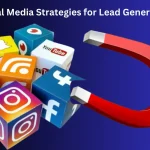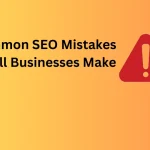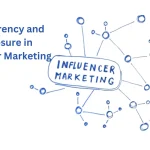In the rapidly evolving landscape of digital marketing, B2B content marketing has emerged as a powerful strategy for businesses to engage, educate, and convert their target audience. Unlike traditional advertising, content marketing focuses on creating valuable, relevant, and consistent content to attract and retain a clearly defined audience. In this article, we’ll delve into the essential components of an effective B2B content marketing strategy and provide actionable tips for implementation.
Understanding Your Audience
The foundation of any effective content marketing strategy is a deep understanding of your target audience. In the B2B space, this often involves catering to multiple organizational stakeholders. Conduct thorough market research to identify your ideal customers, their pain points, challenges, goals, and buying behaviors. Develop detailed buyer personas to personalize your content and tailor it to the specific needs and preferences of each audience segment.
Setting Clear Goals and Objectives for Effective B2B Content Marketing Strategy
Setting clear goals and objectives is crucial for the success of any content marketing strategy. Without well-defined goals, measuring progress, tracking performance, and aligning efforts with overarching business objectives is challenging. Here are some key steps to setting clear goals and objectives for successful content marketing:
1. Align with Business Objectives
Start by aligning your content marketing goals with the broader objectives of your organization. Whether it’s increasing revenue, boosting brand awareness, generating leads, improving customer retention, or enhancing thought leadership, your content goals should directly contribute to the bottom line and support overall business growth.
2. Make Them Specific and Measurable
Ensure that your content marketing goals are specific, measurable, and quantifiable. Avoid vague objectives like “increase brand visibility” or “improve customer engagement.” Instead, define concrete metrics that you can track over time, such as website traffic, conversion rates, lead quality, email sign-ups, social media engagement, or sales revenue.
3. Consider the Buyer’s Journey
Tailor your content goals to align with different stages of the buyer’s journey. Whether it’s raising awareness, educating prospects, nurturing leads, or driving conversions, your content should cater to the needs and interests of your target audience at each stage of their decision-making process.
4. Set Realistic and Achievable Targets
While it’s essential to aim high, be realistic about what you can accomplish with your content marketing efforts. Set targets that are challenging yet achievable based on your available resources, budget, and timeframe. Break down larger goals into smaller, actionable steps to make progress more manageable and measurable.
5. Establish a Timeline
Assign specific timelines and deadlines to your content marketing goals to create a sense of urgency and accountability. Determine when you expect to achieve each objective and outline key milestones along the way. Regularly review and adjust your timeline based on changing priorities, market conditions, and performance insights.
6. Prioritize Quality Over Quantity
Focus on producing high-quality content that resonates with your target audience rather than simply churning out a high volume of mediocre content. Emphasize relevance, authenticity, and value to build trust and credibility with your audience and achieve meaningful engagement and results.
7. Track and Measure Progress
Implement robust analytics tools and systems to track and measure the performance of your content marketing efforts against your established goals and objectives. Monitor key performance indicators (KPIs) regularly, analyze trends and patterns, and identify areas for improvement or optimization.
8. Iterate and Adapt
Content marketing is an iterative process, and success often requires experimentation, iteration, and adaptation. Continuously assess the effectiveness of your content strategy, learn from successes and failures, and refine your approach based on data-driven insights and feedback from your audience.
Content Creation and Distribution
With a solid understanding of your audience and defined goals in place, it’s time to create high-quality, relevant content that resonates with your target audience. Leverage a variety of content formats such as blog posts, whitepapers, case studies, videos, infographics, webinars, and podcasts to cater to different preferences and consumption habits. Maintain consistency in your content production schedule to keep your audience engaged and build credibility over time.
Strive to provide value at every stage of the buyer’s journey, from awareness and consideration to decision-making and post-purchase support. Tailor your content to address common pain points, answer frequently asked questions, and showcase the unique value proposition of your products or services. Incorporate SEO best practices to improve visibility and organic traffic to your content.
Understand Your Audience:
Conduct thorough research to understand the pain points, challenges, and needs of your target audience. Develop detailed buyer personas to guide your content creation efforts and ensure relevance.
Provide Value at Every Stage:
Create a variety of content types tailored to different stages of the buyer’s journey, from awareness to consideration to decision-making. This could include blog posts, whitepapers, case studies, eBooks, webinars, infographics, videos, and more.
Demonstrate Expertise and Authority:
Position your brand as a thought leader in your industry by producing high-quality content that showcases your expertise and addresses industry trends, best practices, and emerging challenges.
Focus on Solutions, Not Sales:
Avoid overtly promotional content and instead focus on providing solutions to your audience’s problems. Educate, inform, and empower your prospects with actionable insights and valuable resources.
Optimize for Search Engines:
Incorporate relevant keywords and phrases into your content to improve its visibility and search engine rankings. However, prioritize creating content for humans first, ensuring readability and relevance.
Also Read
Promotion and Amplification for Effective B2B Content Marketing Strategy
Creating great content is only half the battle; you need to ensure that it reaches your target audience effectively. Develop a comprehensive promotion strategy to amplify your content across multiple channels, including social media, email marketing, influencer outreach, industry publications, and online communities. Engage with relevant industry influencers and thought leaders to expand your reach and credibility.
Experiment with paid advertising, such as sponsored content, pay-per-click (PPC) campaigns, and social media ads, to further boost the visibility of your content and drive targeted traffic to your website. Monitor the performance of your content closely using analytics tools to identify which channels and tactics yield the best results and optimize your strategy accordingly.
Leverage Multiple Channels:
Identify the channels where your target audience is most active and distribute your content accordingly. This could include your website, blog, social media platforms, email newsletters, industry forums, guest blogging opportunities, and more.
Social Media Promotion:
Share your content across your social media channels to increase its reach and engagement. Experiment with different formats (e.g., images, videos, infographics) and posting times to optimize performance.
Email Marketing:
Incorporate your content into email marketing campaigns to nurture leads and keep subscribers informed about industry trends, product updates, and valuable resources. Personalize your emails based on recipient interests and behaviors for better engagement.
Paid Advertising:
Consider investing in paid advertising channels such as Google Ads, LinkedIn Ads, or sponsored content to amplify the reach of your content and target specific audience segments effectively.
Content Syndication:
Partner with industry publications, online communities, or content syndication platforms to repurpose and distribute your content to a broader audience. Ensure that your content remains consistent with your brand messaging and objectives.
Employee Advocacy:
Encourage your employees to share your content with their professional networks to extend your reach and credibility. Provide them with the necessary tools and resources to amplify your content effectively.
Measure and Iterate:
Monitor the performance of your content distribution efforts using analytics tools and adjust your strategy based on insights and feedback. Track metrics such as website traffic, engagement rates, lead conversions, and ROI to assess the effectiveness of your distribution channels.
Also Read
Building Relationships and Fostering Engagement
In the B2B space, building trust and credibility are paramount to success. Focus on building meaningful relationships with your audience by actively engaging with them through comments, social media interactions, and personalized outreach. Encourage feedback, reviews, and user-generated content to foster a sense of community and loyalty around your brand.
Invest in email marketing automation to nurture leads and guide them through the sales funnel with targeted, personalized content. Provide valuable resources, such as ebooks, templates, and industry reports, in exchange for contact information to grow your email list and nurture prospects over time.
Measuring and Analyzing Performance
A key aspect of any successful content marketing strategy is ongoing measurement and analysis of performance metrics. Track relevant KPIs such as website traffic, engagement metrics (likes, shares, comments), conversion rates, lead quality, and customer retention to evaluate the effectiveness of your content efforts.
Utilize analytics tools such as Google Analytics, social media insights, and marketing automation platforms to gain actionable insights into audience behavior, content performance, and ROI. Use this data to identify patterns, trends, and areas for improvement, and iterate on your strategy accordingly.
Conclusion
In today’s competitive business world, a well-crafted and effective B2B content marketing strategy can be a game-changer for businesses looking to stand out, attract prospects, and drive meaningful engagement. By understanding your audience, setting clear goals, creating valuable content, promoting it effectively, building relationships, and analyzing performance, you can create a sustainable and scalable approach to content marketing that delivers tangible results for your business. Embrace creativity, experimentation, and continuous improvement to stay ahead of the curve and drive long-term success.







